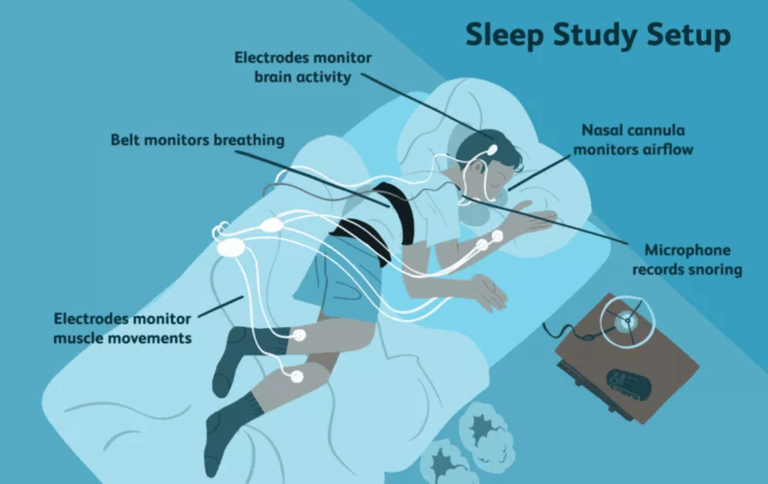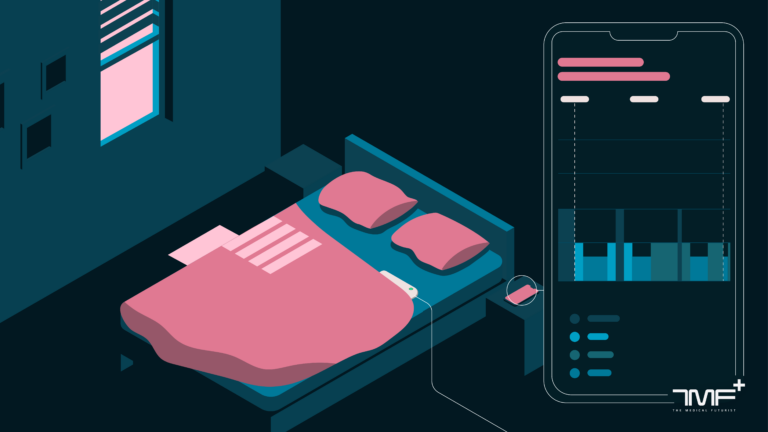The Medical Futurist – Read More
Until the early 2010s, sleep tracking was a rather niche interest, being the focus of research projects and clinical assessments of those with specific health conditions. In recent years, such insights has been promoted to a broader audience, especially among fitness tracking devices and apps.
You might wonder what you might gain from monitoring your sleep. After all, if you manage to sleep at night, what more could you get out of it? The answer is: quite a lot, actually. In fact, sleep tracking might become as ubiquitous as step count in the future. But first, let’s look at its history in this article that explores the evolution of sleep tracking.
A brief history of sleep tracking
Polysomnography (PSG) is considered the gold standard in sleep measurement. This technique relies on measuring multiple physiological parameters, from brain waves to respiration, to monitor sleep stages and patterns. It was developed in the 1950s for research into sleep and its associated disorders, such as insomnia and sleep apnea. It is still used in research and clinical settings to gain in-depth insights and to diagnose sleep disorders.
However, PSG relies on an uncomfortable setup. With the multitude of parameters that are being monitored, it requires the patient to have corresponding monitors attached to them via a network of wires in a sleep lab. In addition, it can be a pricey test that can cost up to $2,000 per night.

To address the limitations of PSG, researchers considered the use of an actigraph. This wrist-worn device relies on movement to monitor a person’s sleep-wake patterns. Actigraphy, or the process of using an actigraph, gained traction in the 1970s in research settings as a cheaper, non-invasive alternative to PSG. This approach also benefits from enabling sleep monitoring in more natural settings, such as one’s home, unlike the controlled lab environment for PSG.
While early versions of the actigraphs were large and required a computer connection to gather the data, their adoption indicated a shift to more flexible sleep tracking. Over the 1990s and 2000s, actigraphs became smaller and lighter. They slowly began integrating more features, such as onboard data storage, while becoming more accurate.
In parallel, the healthcare space moved into the digital health era, where progress in sleep tracking was starting to be exploited for general consumer purposes.
Sleep tracking in the digital health era
From a digital health perspective, the major milestone in the evolution of sleep tracking occurred in the early 2010s. This is when sleep tracking truly broke the confines of research and medical settings, with the premise to replicate sleep monitoring at home. During that time, smartphones became more popular, and they also increasingly featured built-in motion-sensing accelerometers and cloud storage support.
Developers took advantage of these features of smartphones to develop apps that monitor sleep. Akin to actigraphy, they would work by monitoring movements by placing the phone on the bed while you sleep. SleepCycle and Sleep As Android became popular ones in the early 2010s and have endured to this date. Some considered integrating sleep tracking in fitness trackers. The Fitbit One and the Jawbone Up are examples from that early era. They would provide sleep information such as nighttime movement and hours of shuteye.
While the information from early apps and fitness trackers was rudimentary, it opened the world of sleep tracking to a new audience. It provided the general public with insights into their rest and indicated that they could improve it.

The next stage of the evolution of sleep tracking occurred in the mid- to late-2010s. During that period, companies invested more in dedicated sleep tracking devices, with the aim of providing deeper sleep insights. This led to a period of device experimentation as they tried to find the holy grail of sleep trackers, some being more successful than others.
You had mattress sensors like the Live by Earlysense, which you would place under your mattress and would track your sleep stage, sleep quality and time spent awake that you could then view on your phone when you wake up. Others, like the SleepOn Go2Sleep, experimented with the smart ring concept for dedicated sleep tracking.
There was also a tendency to develop smart headbands to monitor your resting time. This resulted in awkward devices like the Philips SmartSleep and the better-designed Dreem 2 that embeds cognitive behavioural therapy to help you sleep better.
While not all of these experimentations were successful, the upside was that the general public and the fitness tracking industry paid more attention to sleep tracking. By the late 2010s and into the 2020s, almost every smartwatch and fitness tracker started measuring sleep.
There is now a range of ways to digitally monitor your sleep patterns. Some of the popular devices that people currently use include smart rings like the Oura Ring, the Whoop wristband, and the Withings Sleep smart sleep mat. But the major win from all of these years of experimentation is the smart sleep alarm.
The holy grail of sleep tracking: the smart sleep alarm
Generally speaking, there are three key elements of your sleep that, as a regular person, you want to focus on. These are the amount of sleep, the quality of sleep and how energised you feel when you wake up. The first of these is easily monitored with a traditional clock, but the latter two factors haven’t been easy to capture until consumer-grade sleep trackers became available.
Most sleep tracking devices and apps will provide insights about your quality of sleep, such as the time you spent in restorative sleep stages. This can provide you with insights regarding your sleep habits, which you can use to make informed decisions to get quality sleep.
As companies experimented with consumer-grade sleep tracking over the years, some have integrated a smart sleep alarm feature. By tracking your sleep cycle, such an alarm will wake you up at the optimal light stage within a preset timeframe, so that you will wake up feeling energised.
The best part of smart sleep alarms? You can get started for free. There are a number of apps with this feature that you can use to benefit from restorative sleep, and the results are immediate. In this sense, the smart sleep alarm is not only the holy grail of sleep tracking but of health tracking in general. It is accessible, convenient, user-friendly, detailed and effective.
Dreaming about the future of sleep tracking
In the future, we can expect sleep tracking to evolve further and become a more passive feature. This is because with the increasing prevalence of sleep monitoring, it could be integrated into every digital health device. We are already seeing the market move in this direction with fitness trackers like the Oura Ring and portable health monitors like the Viatom CheckMe Pro providing in-depth sleep analysis.
There is also the possibility of combined tracking, from different sensors such as a smartwatch and a mattress accessory or a single device with multiple sensors, to provide a more comprehensive picture of one’s health, including sleep hygiene.
The sleep data could be combined with artificial intelligence (AI)-based analysis to provide actionable steps in lifestyle and sleep management. This could, in turn, lead to increased awareness and diagnosis of conditions like sleep apnoea, thereby preventing complications.
Sleep tracking’s evolution is set to become more passive and more in-depth. From the days of uncomfortable PSG tests to passive, AI-driven insights, our future is likely to be more restful.
Written by Dr. Bertalan Meskó & Dr. Pranavsingh Dhunnoo
The post The Digital Evolution Of Sleep Tracking appeared first on The Medical Futurist.





